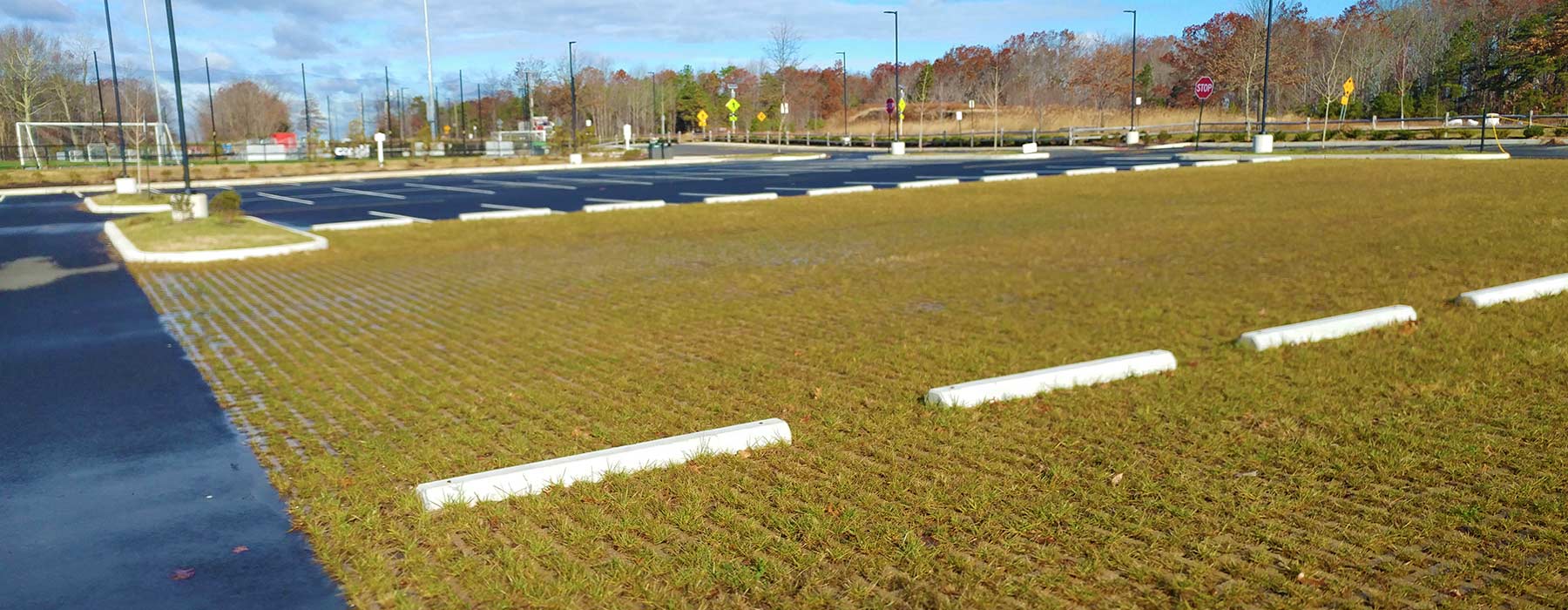
Pervious Pavement System
Pervious pavement is a surface that allows water to infiltrate into the ground below. Pervious pavement materials can include asphalt, concrete, interlocking concrete pavers, gravel, and resin-bonded materials such as recycled rubber, mulch, and glass. These surface courses are installed over a supporting base of crushed stone that helps to store and infiltrate stormwater.
Pervious pavements can offer a simple means of integrating green infrastructure if your development footprint is tightly constrained.

Pervious pavement systems.
Image Credit: Philadelphia Water Department Plan Review, 2018
Considerations:
- Pervious pavement is typically used in parking lot stalls or areas of pedestrian traffic. It is not recommended for drive lanes subject to heavy traffic or where nearby land uses generate heavy sediment or organic material accumulation that could clog the system.
- Construction should not take place during rain or snow, when the subsoil is frozen, or when there is significant accumulation of sediment or debris. These conditions can permanently clog the pervious pavement.
- Snow and ice, especially from areas treated with sand, should not be stockpiled on a pervious pavement system.
Cost: Infiltration systems, such as pervious pavement, are more efficient at meeting stormwater requirements and can therefore have smaller footprints. Construction costs are similar to traditional underground detention systems.
Maintenance: Regular maintenance activities include inspections and sediment/ debris removal, typically with a regenerative air vacuum.
